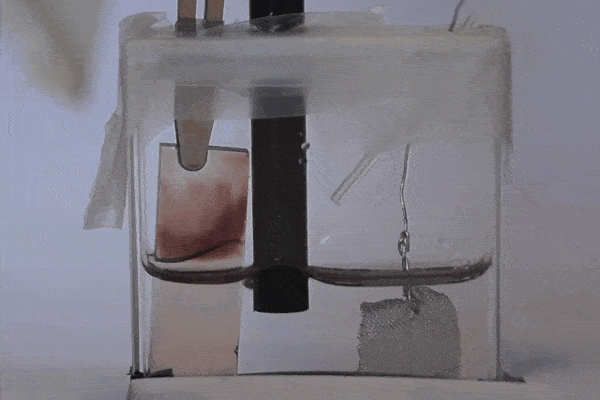
MIT researchers creatively used electrochromic materials which change colour and transparency in response to an applied voltage to design a new class of self-shading windows. When an electrical current is applied, the windows can swiftly change from transparent to opaque, or vice-versa. The power required to trigger the change is minimal. Moreover, to remain in a certain state, no power is required.
Curtains are so last century
Electrochromic windows aren’t exactly new. The Boeing 787 uses these materials for its cabin windows to prevent bright sunlight from glaring the crew. When the voltage is turned on, however, it takes good a couple of minutes before the windows go dark.
This happens because it takes time for the electrons in the material to change charge. To create a colour-changing effect, positive ions need to move through the material, but these move far slower than electrons. Also in regard to previous self-shading windows like those in the 787, MIT’s professor of chemistry Mircea Dincă and lead researcher of the current paper, says these sort of materials don’t change completely from transparent to black.
To make a self-shading window that transforms fast and completely between transparent and opaque, the MIT team used sponge-like materials called metal-organic frameworks (MOFs). These materials conduct both electrons and ions at high speeds and have been used previously by Dincă’s team to make them turn from clear to shades of blue or green. Now, their new material made by mixing an organic material and a metal salt, completely blocks or lets light pass through.
“It’s this combination of these two, of a relatively fast switching time and a nearly black color, that has really got people excited,” Dincă says.
Besides avoiding glare, the new material could prove very useful if incorporated into residential or industrial windows. Just by flipping a switch, you can make the windows let less light through which might save a lot of energy by offsetting air conditioning. Once the sun is ready to set, you can adjust the windows to let sunlight through so you don’t need to turn on the artificial lights.
What’s really interesting is that preliminary tests show only an initial voltage needs to be applied to change the opacity of the windows. No further power is required for the material to maintain its current state. Power is required only when the user wants to revert the material to its former state, whether transparent or opaque.
The results were published in the journal Chem.


